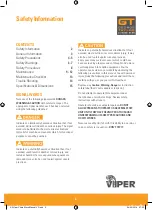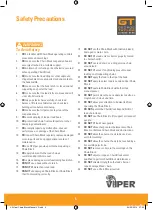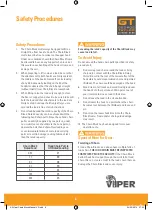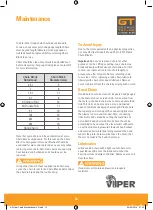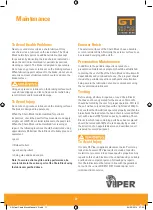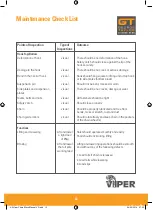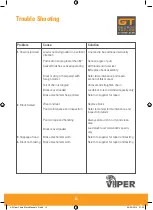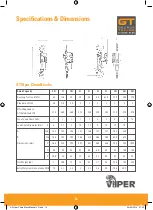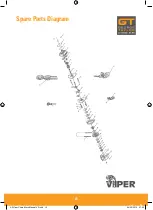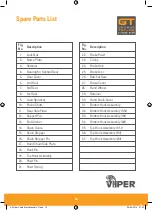
Inspection
To maintain continuous and satisfactory operation, a
regular inspection procedure must be initiated so that
worn or damaged parts can be replaced before they
become unsafe. The intervals of inspection must be
determined by the individual application and are based
upon the type of service to which the Chain Block will
be subjected. The inspection of Chain Blocks is divided
into two general classifications designated as frequent
and periodic.
Frequent Inspections
These inspections are usually visual examinations
by the operator or other designated personnel. The
frequent inspections are to be performed daily or
monthly and shall include the following items:
a. Braking mechanism for evidence of slippage -
Daily.
b. Load chain for lubricant, wear, damaged links or
foreign material - Daily.
c. Hooks for damage, cracks, twists, latch
engagement and latch operation - Monthly.
Any deficiencies noted are to be corrected before the
Chain Block is returned to service.
Periodic Inspections
These are visual inspections by an appointed person
who makes records of apparent external conditions
to provide the basis for a continuing evaluation. For
normal service, the periodic inspections are to be
performed yearly and for heavy service, the periodic
inspections are to be performed semi-annually. Due to
the construction of the Chain Block, it will be necessary
to partially disassemble the unit to perform the periodic
inspections.
The periodic inspections are to include those items
listed under frequent inspections as well as the
following:
a. Chain for excessive wear or stretch.
b. Worn, cracked or distorted parts such as hook
blocks, chain guide, stripper, loose end pin, shafts,
gears, hook collar and bearings.
c. Inspect for wear on the tip of the pawl, teeth
of the ratchet and pockets of the liftwheel and
handwheel.
d. Loose or missing bolts, nuts, pins or rivets.
e. Inspect brake components for worn, glazed or
contaminated friction discs and scoring of the
handwheel hub, ratchet and friction hubs.
f. Corroded, stretched or broken pawl spring.
g. Free movement of the pawl on the pawl stud. Also,
apply a thin coat of lubricant to the pawl stud
before reassembling the unit.
h. Hooks - dye penetrant, magnetic particle or other
suitable crack detecting inspections should
be performed at least once a year, if external
conditions indicate there has been unusual usage.
Any deficiencies noted are to be corrected before the
Chain Block is returned to service. Also, the external
conditions may show the need for a detailed inspection
which, in turn, may require the use of non destructive-
type testing. Any parts that are deemed unserviceable
are to be replaced with new parts before the unit
is returned to service. It is very important that the
unserviceable parts be destroyed to prevent possible
future use as a repair item and properly disposed of.
NOTE: Only qualified personnel to perform Chain Block
maintenance
9
Maintenance
HOISTS
A5 Viper Chain Block Manual V2.indd 9
04/03/2014 07:33


